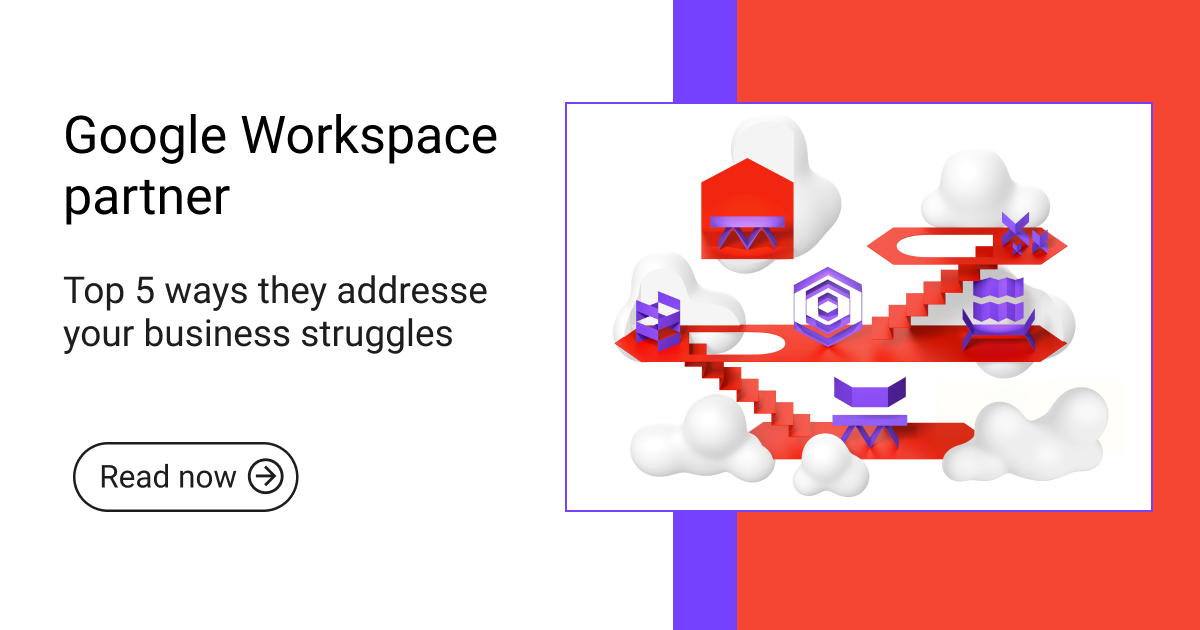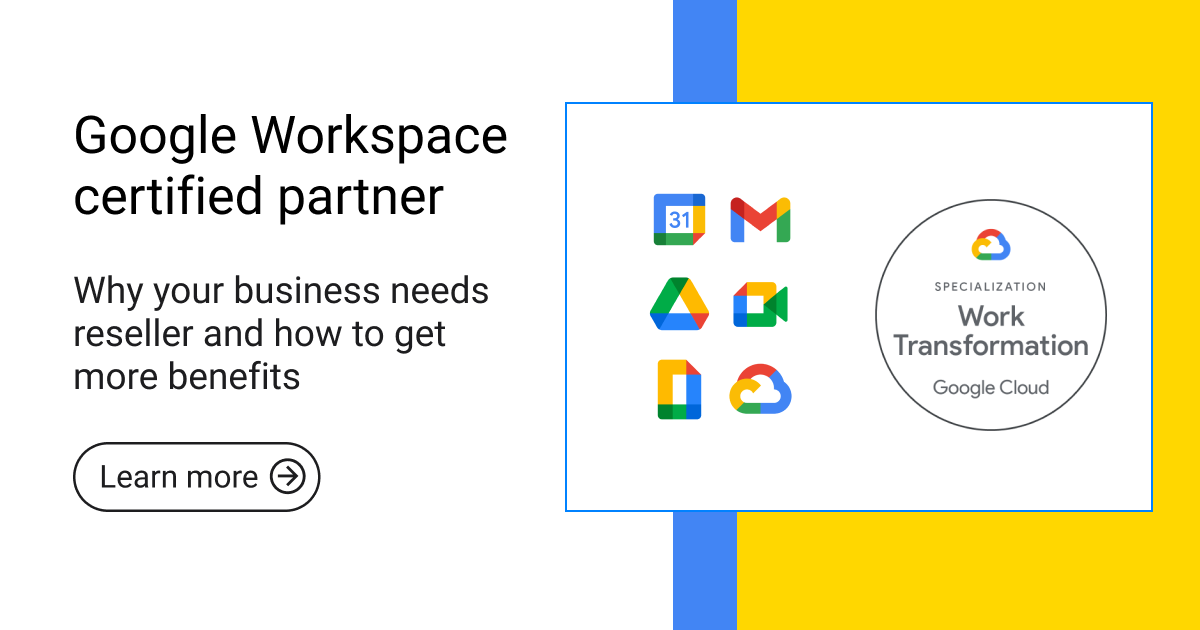Google Workspace, Professional Services
Effect of Google to Google Migration on End-Users
Are you trying to migrate one Google Workspace to another? Sounds easy, right? Same product, same logic, same structure (but not really). What could go wrong? Initially, a great idea now may look like a nightmare for your users.
How Google Workspace to Google Workspace migration can affect your end users?
Migrating different Google Workspace domains under one primary domain is usually a good idea which brings you lots of benefits - starting with simplified IT governance, better identity management or having a single point of truth for all security policies. With all your licences consolidated and billed under one domain, you can likely get a better commercial offering for your Google Workspace price.
But beware, the migration project from Google Workspace to the Google Workspace is one of the most complicated migrations with a lot of technical limitations. To succeed with a project, you have to flawlessly execute the technical work and manage the expectations of all the end-users in your organisation.
The most common impacts of this migration on your end-users:
- When migrating calendar events, it is possible that Google Meet links will not be functional, and you will need to recover them.
- You will need to redistribute passwords to end-users.
- End users will lose access to 3rd party applications connected to Google Workspace accounts.
- If you have, for example, Google Sheets connected (or Sheet linked to the Slides, or Documents embedded in the Sites etc.), this connection needs to be also done again after migration.
- Some specific settings such as Gmail filters, or the settings in Chrome, won’t be migrated.
- The most complicated topic is Drive migration, which usually leads to different issues. You can encounter lost files, doubled or wrongly migrated folders or general issues with rights and sharing.
As you can see, the migration is not as easy as it looks. Of course, fortune favours the brave, but do you feel brave enough? If not, or perhaps even if, Revolgy is the partner who can guide you through a structured change management process covering all the needs.
Revolgy offers expert Google Workspace implementation and management services to ensure your migration is smooth, secure, and user-friendly.
Milestones of migration
The topic of change needs to be clearly communicated and validated within all departments in your organisation.
You should review the Change history and assess what changes happened in an organisation — how these changes were successful and why. Subsequently, nominate Early Adopters and Key Stakeholders across the organisation and ask them for help, feedback and understanding of their expectations. This task will help you design & formulate what benefits will change bring to them.
Based on the gathered feedback, prepare Q&As, support materials and pieces of training tailored to the organisation’s needs. Coming next is the communication itself. Open the channels for communication across organisations — provide training, support Early Adopters & Key Stakeholders, set up a Q&A community and ramp up your support channels. Use all the possibilities to support your end-users with clear information and ensure them you can manage the change well. In the end, your users are the ones affected the most.
If you manage to implement these principles during your migration process, the enjoyment of consolidated IT is guaranteed, and the process is painless without downtime or unsatisfied end-users & stakeholders.
Get in touch with the workspace@revolgy.com team to understand how we can help you with this approach.
FAQs
Q1: What is a common misconception about migrating between different Google Workspace environments?
While it might seem easy because it involves the same product, migrating from one Google Workspace instance to another is actually one of the most complicated types of migrations, with significant technical limitations.
Q2: What are the potential advantages of consolidating multiple Google Workspace domains into one primary domain?
Consolidating domains can lead to benefits such as simplified IT governance, improved identity management, a single source for security policies, and potentially better pricing due to consolidated billing.
Q3: What two critical factors are required for a successful Google Workspace to Google Workspace migration?
Success depends on both flawless execution of the technical migration tasks and effective management of the expectations of all end-users within the organization.
Q4: How might the migration impact Google Meet links within calendar events?
It is possible that Google Meet links in migrated calendar events will no longer be functional and will need to be recovered or recreated.
Q5: What action is required regarding user passwords during this type of migration?
Passwords will need to be redistributed to the end-users for their new accounts.
Q6: What happens to user access to third-party applications connected to their old Google Workspace accounts?
End-users will lose access to these third-party applications, and connections will likely need to be re-established.
Q7: If Google files are linked together (e.g., a Sheet linked in a Slide, a Doc embedded in a Site), what needs to happen after migration?
These internal file connections will need to be redone after the migration is complete.
Q8: Will user settings like Gmail filters be transferred during the migration?
No, specific settings such as Gmail filters and user settings within the Chrome browser are not migrated.
Q9: Which part of the migration is described as the most complex, and what issues might users face?
Drive migration is considered the most complicated aspect. Users might encounter issues like lost files, duplicated or incorrectly migrated folders, and problems with file permissions and sharing settings.
Q10: Given the potential impact on users, what process is essential for managing the migration smoothly?
A structured change management process is vital to address user needs and expectations throughout the migration.



